Adaptive Sampling of Pareto Frontiers with Binary Constraints Using Regression and Classification

Auto-TLDR; Adaptive Optimization for Black-Box Multi-Objective Optimizing Problems with Binary Constraints
Similar papers
3CS Algorithm for Efficient Gaussian Process Model Retrieval
Fabian Berns, Kjeld Schmidt, Ingolf Bracht, Christian Beecks

Auto-TLDR; Efficient retrieval of Gaussian Process Models for large-scale data using divide-&-conquer-based approach
Abstract Slides Poster Similar
A Multilinear Sampling Algorithm to Estimate Shapley Values

Auto-TLDR; A sampling method for Shapley values for multilayer Perceptrons
Abstract Slides Poster Similar
Multi-annotator Probabilistic Active Learning
Marek Herde, Daniel Kottke, Denis Huseljic, Bernhard Sick

Auto-TLDR; MaPAL: Multi-annotator Probabilistic Active Learning
Abstract Slides Poster Similar
Automatically Mining Relevant Variable Interactions Via Sparse Bayesian Learning
Ryoichiro Yafune, Daisuke Sakuma, Yasuo Tabei, Noritaka Saito, Hiroto Saigo

Auto-TLDR; Sparse Bayes for Interpretable Non-linear Prediction
Abstract Slides Poster Similar
Budgeted Batch Mode Active Learning with Generalized Cost and Utility Functions
Arvind Agarwal, Shashank Mujumdar, Nitin Gupta, Sameep Mehta

Auto-TLDR; Active Learning Based on Utility and Cost Functions
Abstract Slides Poster Similar
Uniform and Non-Uniform Sampling Methods for Sub-Linear Time K-Means Clustering

Auto-TLDR; Sub-linear Time Clustering with Constant Approximation Ratio for K-Means Problem
Abstract Slides Poster Similar
Active Sampling for Pairwise Comparisons via Approximate Message Passing and Information Gain Maximization
Aliaksei Mikhailiuk, Clifford Wilmot, Maria Perez-Ortiz, Dingcheng Yue, Rafal Mantiuk

Auto-TLDR; ASAP: An Active Sampling Algorithm for Pairwise Comparison Data
Learning Sign-Constrained Support Vector Machines
Kenya Tajima, Kouhei Tsuchida, Esmeraldo Ronnie Rey Zara, Naoya Ohta, Tsuyoshi Kato

Auto-TLDR; Constrained Sign Constraints for Learning Linear Support Vector Machine
Bayesian Active Learning for Maximal Information Gain on Model Parameters
Kasra Arnavaz, Aasa Feragen, Oswin Krause, Marco Loog

Auto-TLDR; Bayesian assumptions for Bayesian classification
Abstract Slides Poster Similar
Adaptive Matching of Kernel Means

Auto-TLDR; Adaptive Matching of Kernel Means for Knowledge Discovery and Feature Learning
Abstract Slides Poster Similar
Watermelon: A Novel Feature Selection Method Based on Bayes Error Rate Estimation and a New Interpretation of Feature Relevance and Redundancy

Auto-TLDR; Feature Selection Using Bayes Error Rate Estimation for Dynamic Feature Selection
Abstract Slides Poster Similar
Factor Screening Using Bayesian Active Learning and Gaussian Process Meta-Modelling
Cheng Li, Santu Rana, Andrew William Gill, Dang Nguyen, Sunil Kumar Gupta, Svetha Venkatesh

Auto-TLDR; Data-Efficient Bayesian Active Learning for Factor Screening in Combat Simulations
ILS-SUMM: Iterated Local Search for Unsupervised Video Summarization
Yair Shemer, Daniel Rotman, Nahum Shimkin

Auto-TLDR; ILS-SUMM: Iterated Local Search for Video Summarization
The eXPose Approach to Crosslier Detection
Antonio Barata, Frank Takes, Hendrik Van Den Herik, Cor Veenman

Auto-TLDR; EXPose: Crosslier Detection Based on Supervised Category Modeling
Abstract Slides Poster Similar
Naturally Constrained Online Expectation Maximization
Daniela Pamplona, Antoine Manzanera
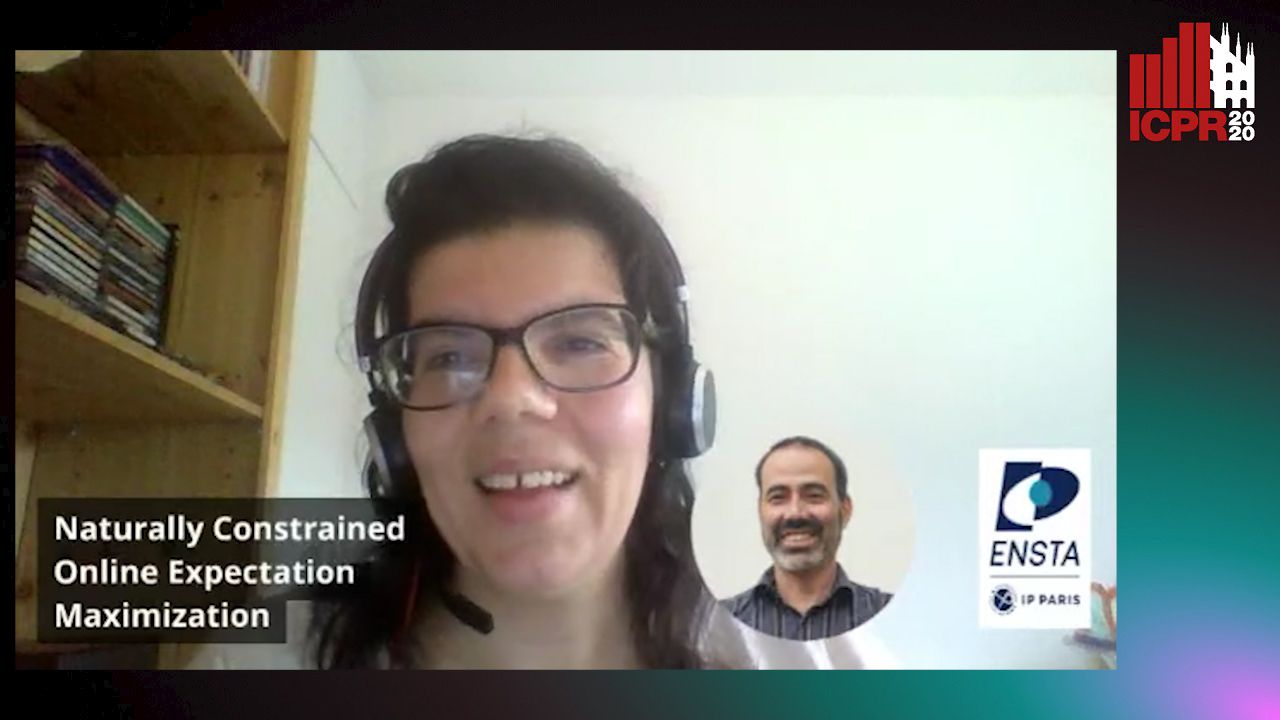
Auto-TLDR; Constrained Online Expectation-Maximization for Probabilistic Principal Components Analysis
Abstract Slides Poster Similar
Auto Encoding Explanatory Examples with Stochastic Paths
Cesar Ali Ojeda Marin, Ramses J. Sanchez, Kostadin Cvejoski, Bogdan Georgiev

Auto-TLDR; Semantic Stochastic Path: Explaining a Classifier's Decision Making Process using latent codes
Abstract Slides Poster Similar
Low-Cost Lipschitz-Independent Adaptive Importance Sampling of Stochastic Gradients
Huikang Liu, Xiaolu Wang, Jiajin Li, Man-Cho Anthony So

Auto-TLDR; Adaptive Importance Sampling for Stochastic Gradient Descent
RNN Training along Locally Optimal Trajectories via Frank-Wolfe Algorithm
Yun Yue, Ming Li, Venkatesh Saligrama, Ziming Zhang

Auto-TLDR; Frank-Wolfe Algorithm for Efficient Training of RNNs
Abstract Slides Poster Similar
Separation of Aleatoric and Epistemic Uncertainty in Deterministic Deep Neural Networks
Denis Huseljic, Bernhard Sick, Marek Herde, Daniel Kottke

Auto-TLDR; AE-DNN: Modeling Uncertainty in Deep Neural Networks
Abstract Slides Poster Similar
Deep Transformation Models: Tackling Complex Regression Problems with Neural Network Based Transformation Models
Beate Sick, Torsten Hothorn, Oliver Dürr

Auto-TLDR; A Deep Transformation Model for Probabilistic Regression
Abstract Slides Poster Similar
An Invariance-Guided Stability Criterion for Time Series Clustering Validation
Florent Forest, Alex Mourer, Mustapha Lebbah, Hanane Azzag, Jérôme Lacaille

Auto-TLDR; An invariance-guided method for clustering model selection in time series data
Abstract Slides Poster Similar
Camera Calibration Using Parallel Line Segments

Auto-TLDR; Closed-Form Calibration of Surveillance Cameras using Parallel 3D Line Segment Projections
Abstract Slides Poster Similar
Quantifying Model Uncertainty in Inverse Problems Via Bayesian Deep Gradient Descent
Riccardo Barbano, Chen Zhang, Simon Arridge, Bangti Jin
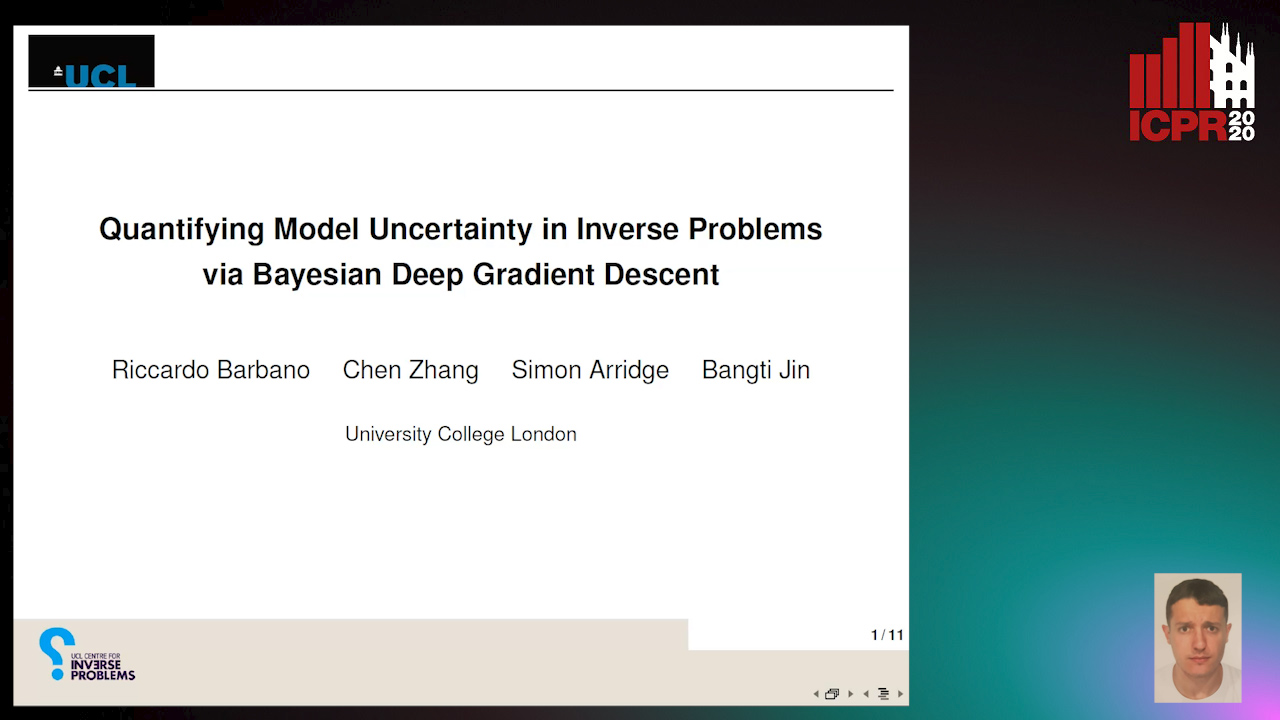
Auto-TLDR; Bayesian Neural Networks for Inverse Reconstruction via Bayesian Knowledge-Aided Computation
Abstract Slides Poster Similar
Stochastic Runge-Kutta Methods and Adaptive SGD-G2 Stochastic Gradient Descent

Auto-TLDR; Adaptive Stochastic Runge Kutta for the Minimization of the Loss Function
Abstract Slides Poster Similar
Expectation-Maximization for Scheduling Problems in Satellite Communication
Werner Bailer, Martin Winter, Johannes Ebert, Joel Flavio, Karin Plimon
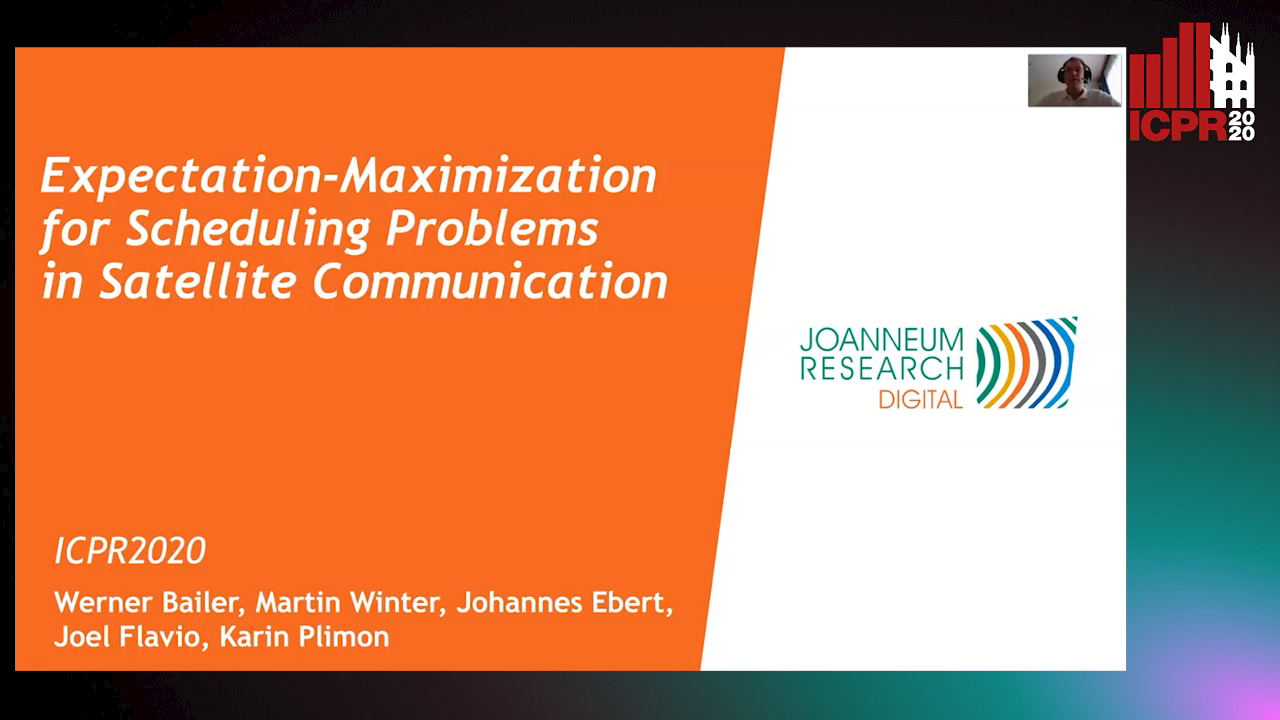
Auto-TLDR; Unsupervised Machine Learning for Satellite Communication Using Expectation-Maximization
Abstract Slides Poster Similar
Aggregating Dependent Gaussian Experts in Local Approximation

Auto-TLDR; A novel approach for aggregating the Gaussian experts by detecting strong violations of conditional independence
Abstract Slides Poster Similar
Killing Four Birds with One Gaussian Process: The Relation between Different Test-Time Attacks
Kathrin Grosse, Michael Thomas Smith, Michael Backes

Auto-TLDR; Security of Gaussian Process Classifiers against Attack Algorithms
Abstract Slides Poster Similar
Probabilistic Word Embeddings in Kinematic Space
Adarsh Jamadandi, Rishabh Tigadoli, Ramesh Ashok Tabib, Uma Mudenagudi
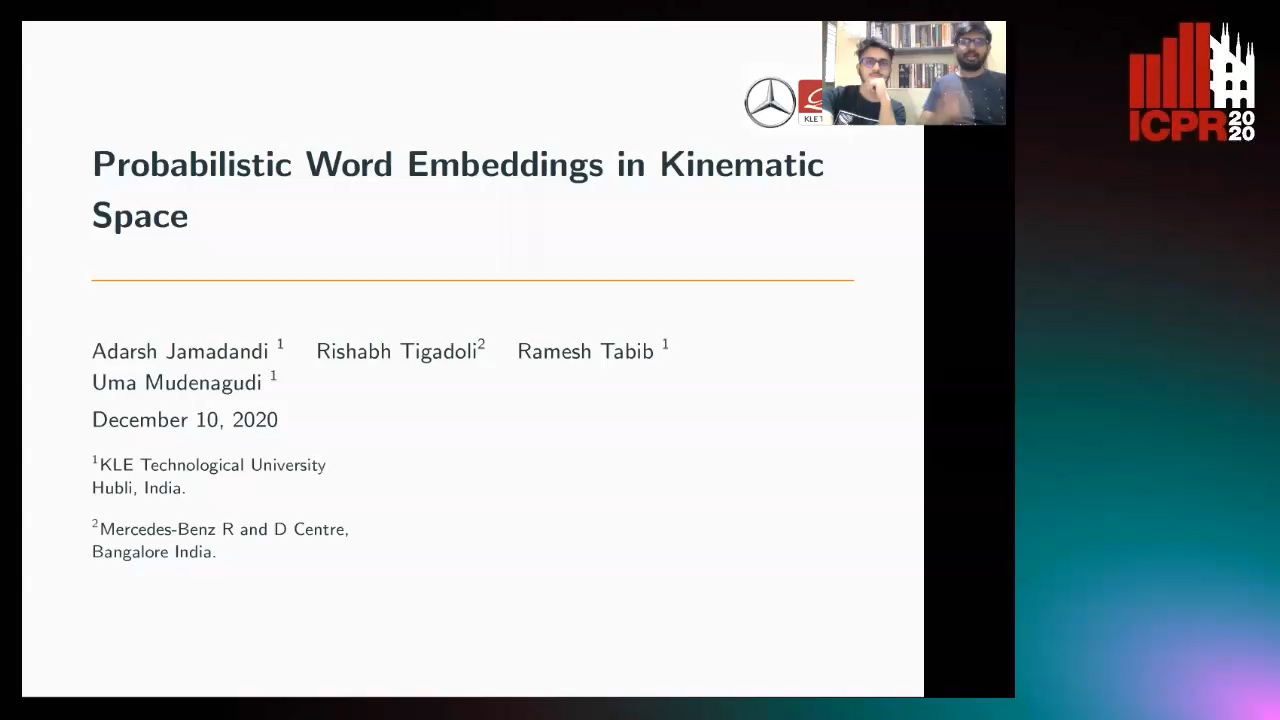
Auto-TLDR; Kinematic Space for Hierarchical Representation Learning
Abstract Slides Poster Similar
Mean Decision Rules Method with Smart Sampling for Fast Large-Scale Binary SVM Classification
Alexandra Makarova, Mikhail Kurbakov, Valentina Sulimova

Auto-TLDR; Improving Mean Decision Rule for Large-Scale Binary SVM Problems
Abstract Slides Poster Similar
GPSRL: Learning Semi-Parametric Bayesian Survival Rule Lists from Heterogeneous Patient Data
Ameer Hamza Shakur, Xiaoning Qian, Zhangyang Wang, Bobak Mortazavi, Shuai Huang

Auto-TLDR; Semi-parametric Bayesian Survival Rule List Model for Heterogeneous Survival Data
Sketch-Based Community Detection Via Representative Node Sampling
Mahlagha Sedghi, Andre Beckus, George Atia

Auto-TLDR; Sketch-based Clustering of Community Detection Using a Small Sketch
Abstract Slides Poster Similar
Relative Feature Importance
Gunnar König, Christoph Molnar, Bernd Bischl, Moritz Grosse-Wentrup

Auto-TLDR; Relative Feature Importance for Interpretable Machine Learning
Creating Classifier Ensembles through Meta-Heuristic Algorithms for Aerial Scene Classification
Álvaro Roberto Ferreira Jr., Gustavo Gustavo Henrique De Rosa, Joao Paulo Papa, Gustavo Carneiro, Fabio Augusto Faria

Auto-TLDR; Univariate Marginal Distribution Algorithm for Aerial Scene Classification Using Meta-Heuristic Optimization
Abstract Slides Poster Similar
Understanding Integrated Gradients with SmoothTaylor for Deep Neural Network Attribution
Gary Shing Wee Goh, Sebastian Lapuschkin, Leander Weber, Wojciech Samek, Alexander Binder

Auto-TLDR; SmoothGrad: bridging Integrated Gradients and SmoothGrad from the Taylor's theorem perspective
Deep Learning on Active Sonar Data Using Bayesian Optimization for Hyperparameter Tuning
Henrik Berg, Karl Thomas Hjelmervik

Auto-TLDR; Bayesian Optimization for Sonar Operations in Littoral Environments
Abstract Slides Poster Similar
Wasserstein k-Means with Sparse Simplex Projection
Takumi Fukunaga, Hiroyuki Kasai
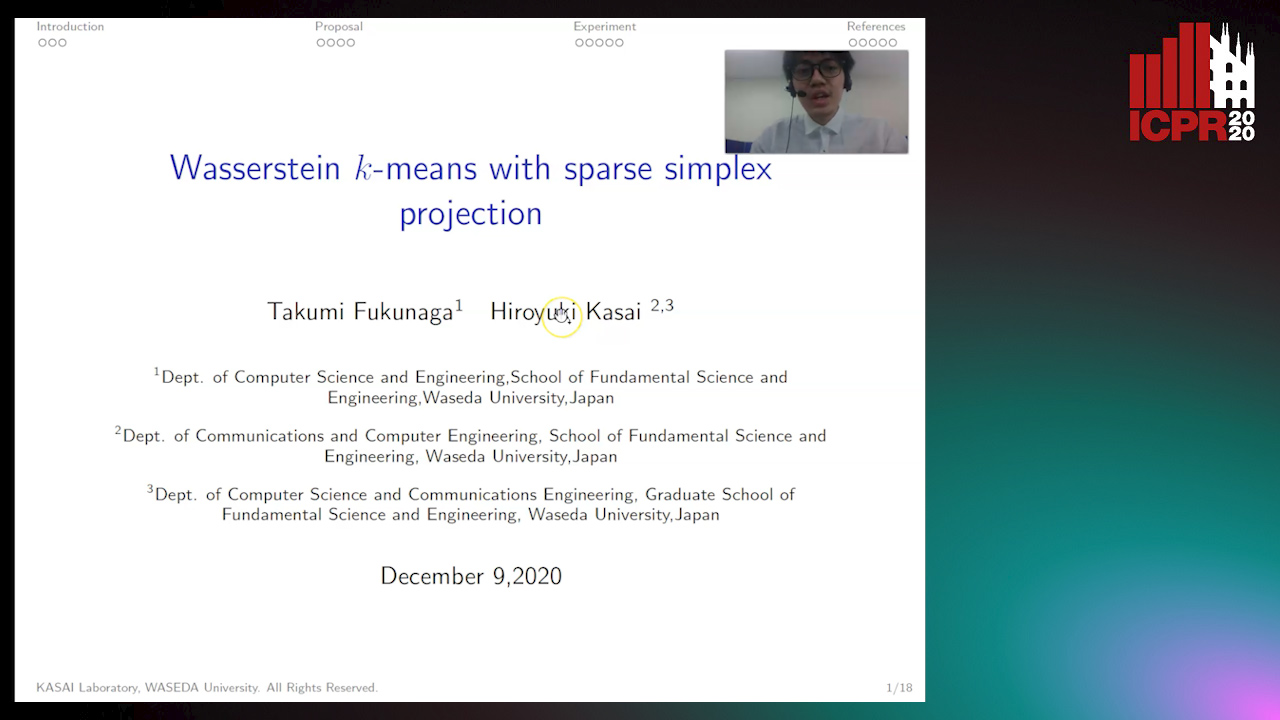
Auto-TLDR; SSPW $k$-means: Sparse Simplex Projection-based Wasserstein $ k$-Means Algorithm
Abstract Slides Poster Similar
Exact and Convergent Iterative Methods to Compute the Orthogonal Point-To-Ellipse Distance
Siyu Guo, Pingping Hu, Zhigang Ling, He Wen, Min Liu, Lu Tang

Auto-TLDR; Convergent iterative algorithm for orthogonal distance based ellipse fitting
Abstract Slides Poster Similar
On Resource-Efficient Bayesian Network Classifiers and Deep Neural Networks
Wolfgang Roth, Günther Schindler, Holger Fröning, Franz Pernkopf

Auto-TLDR; Quantization-Aware Bayesian Network Classifiers for Small-Scale Scenarios
Abstract Slides Poster Similar
Temporal Pattern Detection in Time-Varying Graphical Models
Federico Tomasi, Veronica Tozzo, Annalisa Barla

Auto-TLDR; A dynamical network inference model that leverages on kernels to consider general temporal patterns
Abstract Slides Poster Similar
Switching Dynamical Systems with Deep Neural Networks
Cesar Ali Ojeda Marin, Kostadin Cvejoski, Bogdan Georgiev, Ramses J. Sanchez

Auto-TLDR; Variational RNN for Switching Dynamics
Abstract Slides Poster Similar
Fast Approximate Modelling of the Next Combination Result for Stopping the Text Recognition in a Video
Konstantin Bulatov, Nadezhda Fedotova, Vladimir V. Arlazarov
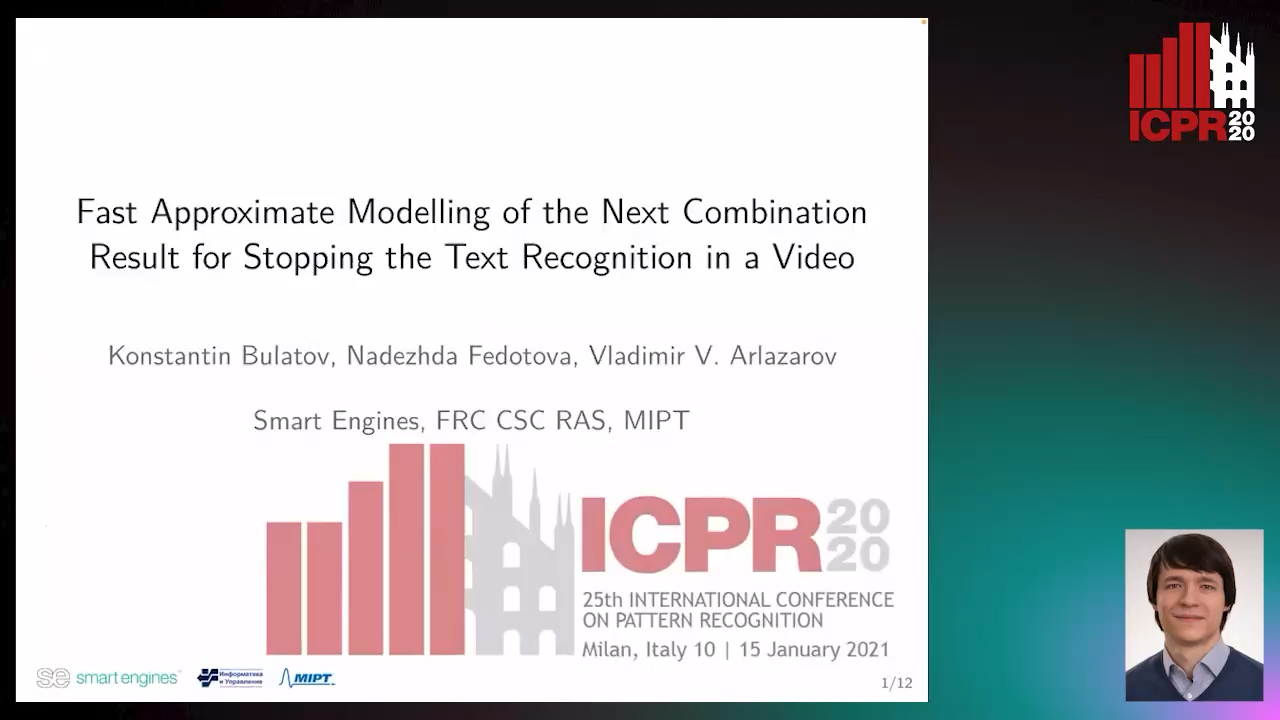
Auto-TLDR; Stopping Video Stream Recognition of a Text Field Using Optimized Computation Scheme
Abstract Slides Poster Similar
Towards Explaining Adversarial Examples Phenomenon in Artificial Neural Networks
Ramin Barati, Reza Safabakhsh, Mohammad Rahmati
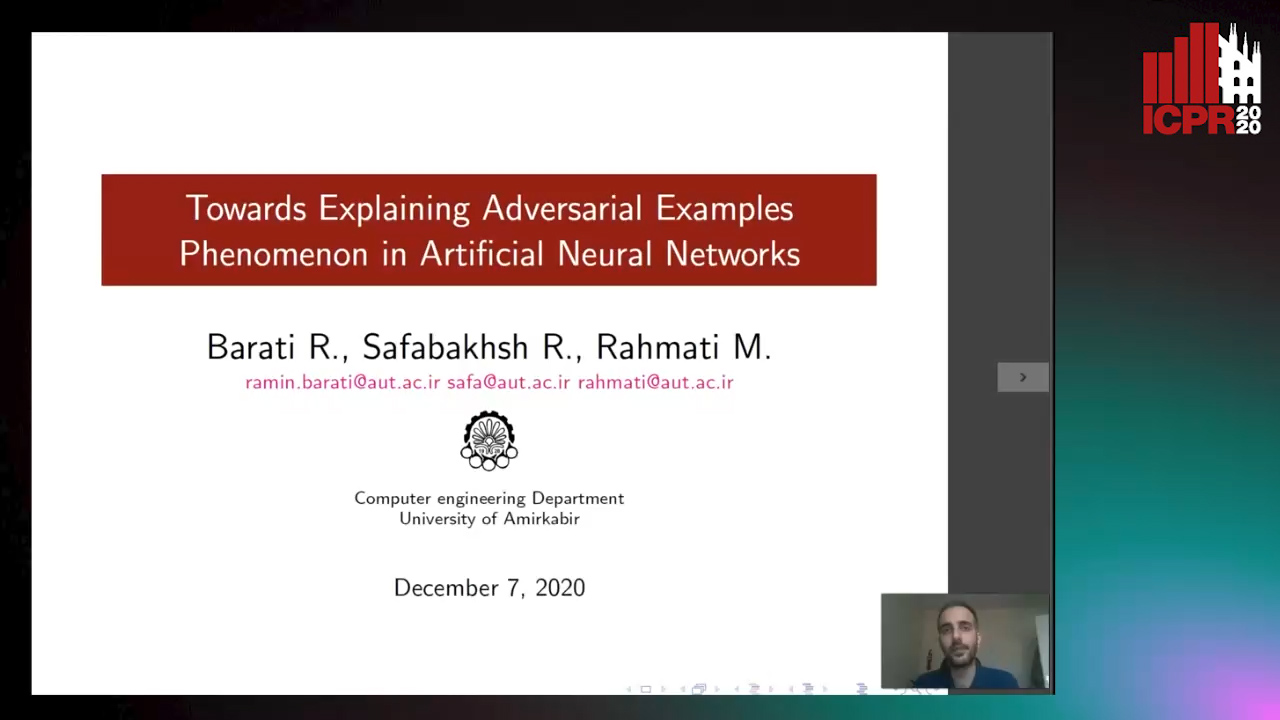
Auto-TLDR; Convolutional Neural Networks and Adversarial Training from the Perspective of convergence
Abstract Slides Poster Similar
Kernel-Based LIME with Feature Dependency Sampling
Sheng Shi, Yangzhou Du, Fan Wei

Auto-TLDR; Local Interpretable Model-agnostic Explanation with Feature Dependency Sampling
Abstract Slides Poster Similar
Label Self-Adaption Hashing for Image Retrieval
Jianglin Lu, Zhihui Lai, Hailing Wang, Jie Zhou

Auto-TLDR; Label Self-Adaption Hashing for Large-Scale Image Retrieval
Abstract Slides Poster Similar
Feature Extraction by Joint Robust Discriminant Analysis and Inter-Class Sparsity

Auto-TLDR; Robust Discriminant Analysis with Feature Selection and Inter-class Sparsity (RDA_FSIS)
Probabilistic Latent Factor Model for Collaborative Filtering with Bayesian Inference
Jiansheng Fang, Xiaoqing Zhang, Yan Hu, Yanwu Xu, Ming Yang, Jiang Liu

Auto-TLDR; Bayesian Latent Factor Model for Collaborative Filtering
Classification and Feature Selection Using a Primal-Dual Method and Projections on Structured Constraints
Michel Barlaud, Antonin Chambolle, Jean_Baptiste Caillau

Auto-TLDR; A Constrained Primal-dual Method for Structured Feature Selection on High Dimensional Data
Abstract Slides Poster Similar
Fast Multi-Level Foreground Estimation
Thomas Germer, Tobias Uelwer, Stefan Conrad, Stefan Harmeling
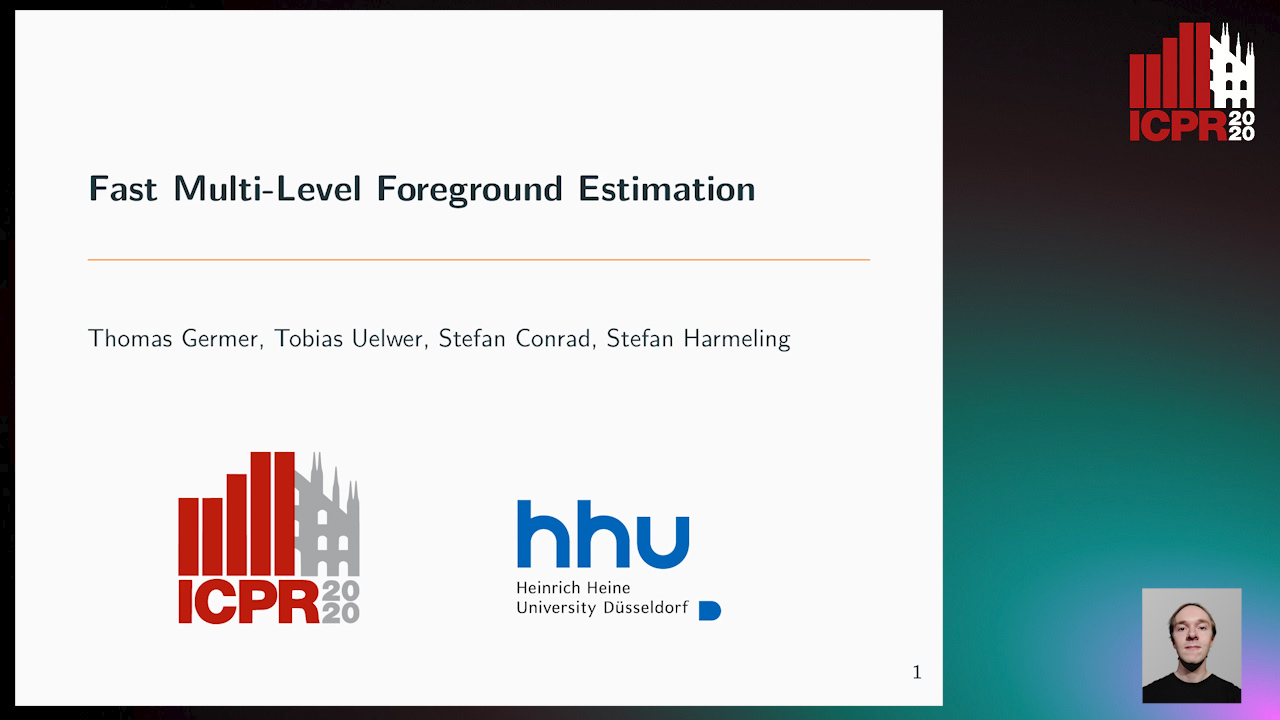
Auto-TLDR; Fur foreground estimation given the alpha matte
Abstract Slides Poster Similar